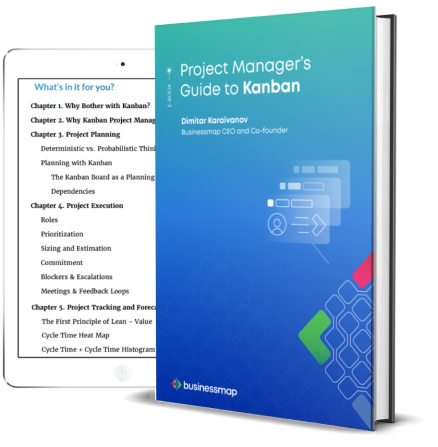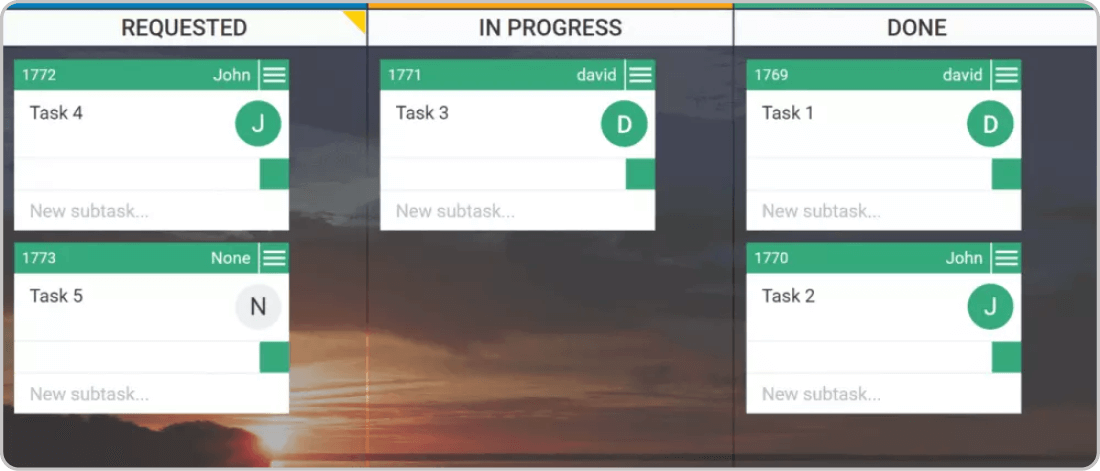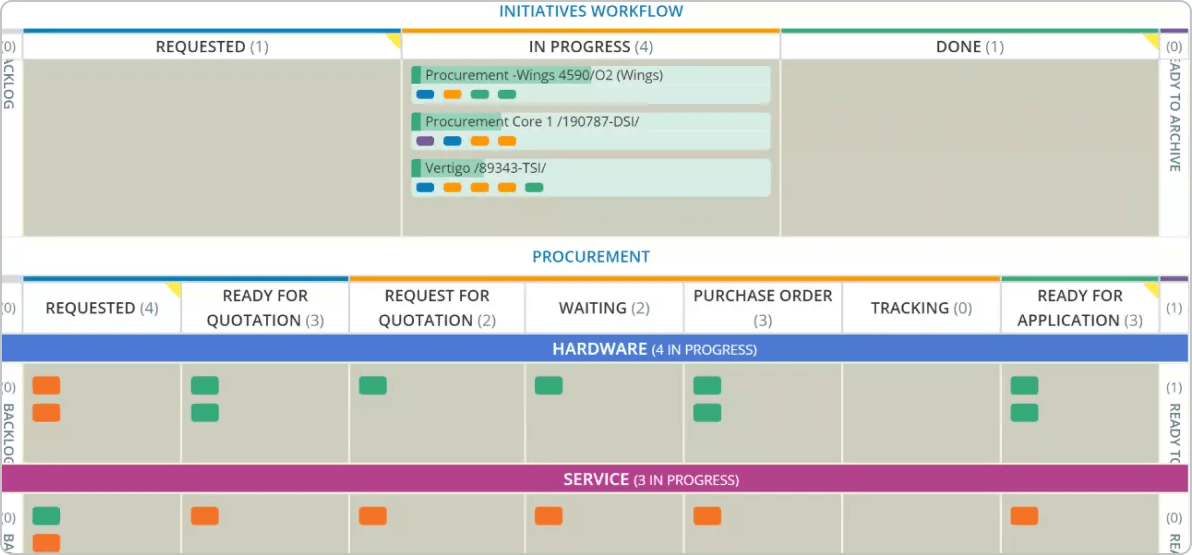As the market is getting more saturated by the day, customers are becoming increasingly demanding and difficult to convince that you can provide the value they are looking for.
An effective technique originating from manufacturing has proven to get organizations ahead of the competition. By visualizing the end-to-end value creation flow, value stream mapping allows organizations to streamline operations and improve efficiency.
What Is Value Stream Mapping (VSM)?
Value stream mapping is a Lean management tool used to visualize, analyze and improve all the steps in a product or service delivery process.
Also known as material or information flow mapping, VSM represents the entire flow of goods, materials, or information from the supplier to the customer. The technique is also part of the Six Sigma and Lean Six Sigma methodologies for process improvement.
VSM involves creating a detailed map of all the important steps of your work process necessary to deliver value from start to finish. By doing so, you can easily identify waste, inefficiencies, and opportunities for improvement.
It is essential to clarify that value in Lean is everything that the customer would pay for. However, when it comes to mapping a value stream, some steps may not bring direct value to your customer but help ensure that you will deliver the final product or service.
A clear example of such steps is the quality inspections that are irreplaceable in every production process. Of course, your customer is not paying you to do these checks, but if you deliver a final product that doesn’t meet their quality standard or expectations, they will be less willing to buy from you ever again.
History of Value Stream Mapping
Value stream mapping became a popular practice with Lean's rise in the second half of the 20th century. It was one of the foundations that made the Toyota Production System a manufacturing sensation, although, by that time, the term VSM was not present.

The original Kanban System, Source: TOYOTA Global Website
However, it is a common misconception that Toyota invented the practice associated with visually mapping a workflow. There are records of diagrams showing the flow of materials and information in a 1918 book called Installing Efficiency Methods by Charles E. Knoeppel.
By the 1990s, the value stream mapping process became part of the lives of many western managers. Its popularity started to outgrow manufacturing and eventually spread into knowledge work industries such as product and software development, IT operations, as well as healthcare, logistics, and many others.
What Is the Purpose of VSM?
The primary purpose of creating a value stream map is to show you where you can improve your process by visualizing both its value added and non-value added steps.
To get started, you need to display every vital step of your workflow, activities, or resources involved and evaluate how that brings value to your customer. This would enable an in-depth analysis of your process and provide you with precise insights into the areas that need to improve.
Additionally, VSM can help organizations to better assess the impact of changes in the process and identify more ways to continuously improve.
What Are the Benefits of Value Stream Mapping?
The essential benefits of using value stream mapping include the following:
-
Identifying and eliminating waste: With the help of VSM, you can better understand where waste is accumulating in your process, including waiting, overproduction, unnecessary processing.
-
Visualizing the entire value stream: The value stream map shows all the steps in a process, including the value-adding and non-value-adding activities and provides a common understanding of the entire workflow.
-
Enabling continuous improvement: VSM highlights the current workflow and brings the focus on future improvement.
10 Years Kanban Experience In 1 Free Book.
Project Manager's Guide to Kanban
Value Stream Mapping Examples
VSM can be applied and bring value to various industries and processes.
-
VSM in service industries: VSM can be used in banking, insurance, or procurement to map the flow of work and identify inefficiencies such as unnecessary steps or long waiting times for approval. Eliminating such causes can help you streamline your work and improve customer satisfaction.
-
VSM in pharma and healthcare: Similarly, by mapping the patient flow, VSM can help you better understand where the bottlenecks lie in your process. A value stream map can indicate that you need to reduce the patient waiting time, focus on patient outcomes, or focus on your staff productivity.
-
VSM in logistics: Value stream mapping can unlock insights about where in your process costly delays occur, whether is there overstocking or unnecessary transportation, so that you can address these weak links directly. By doing so, organizations can improve their process flow, operations visibility, and control.
Why Value Stream Mapping Works Well in Knowledge Work?
Value stream mapping is gaining popularity in knowledge work because it allows teams that work in a siloed environment to visualize their work and collaborate better.
Even individual contributors can have a bird’s eye overview of how the team’s work is progressing.
As a result, teams can increase work handoffs' efficiency, which is a major culprit for accumulating wait time in your system. Waiting is one of the 7 wastes of Lean, and therefore it should be everyone’s priority to minimize it.
Mapping your process can help you visualize where handoffs occur, so you can also discover where the bottlenecks (queues) of your process are and come up with a way to minimize their damage to your team’s productivity.
How to Create a Value Stream Map with Kanban?
Kanban is probably one of the most reliable value stream mapping tools. Especially if you want to visualize a knowledge work process. It is very intuitive to work with and allows you to make changes easily.
Basic Kanban board
To map your process with Kanban, you need just two elements – a Kanban board and Kanban cards for all your team assignments. Here are the steps to start mapping your value stream and a few examples.
1. Create a Kanban Board
If you are new to workflow visualization, it is better to start small. Start by creating a Kanban board, preferably for a single team or department. Be sure to select the most convenient way to map your Kanban workflow. You should choose either a physical board or a Kanban software solution.
2. Define VSM Purpose and Expectations
Afterward, gather the team and clearly explain the purpose of value stream mapping and what you expect to achieve by implementing it.
3. Visualize the Key Stages of Your Workflow
Then, bind your process together. By default, a Kanban board comes with three work item states: To Do, In Progress, and Done.
Your focus should be on breaking down In Progress into multiple columns to represent your workflow’s most crucial value stream steps. For example, a software development process usually contains the following steps: Tech Design, Coding, Testing, and Code Review.
You can add as many columns to your Kanban board as needed. In turn, the "In Progress" area of a procurement team process, for instance, might include the following stages: Request for Quotation, Waiting, and Purchase Order.
 Procurement process mapped using a Kanban board
Procurement process mapped using a Kanban board
More precise mapping will logically give you a more comprehensive view and, therefore, more indications of where you can improve your performance.
 Mapping an entire end-to-end value delivery flow
Mapping an entire end-to-end value delivery flow
Place special attention on queue stages of your process (ex. "Ready for Review") where work handovers occur.
4. Perform Value Stream Map Analysis
When you’ve got a bound process, be sure to select a range of performance metrics to monitor. A simple set of workflow key performance indicators is:
You should always aim to keep lead time and cycle time close to one another. So even if you are super-efficient at processing work, but you’ve got a long backlog that results in customers waiting for too long to receive their order, it won’t matter.
When it comes to throughput, you need to keep it as high as possible without sacrificing the quality of the value you deliver to the customer.
Work in progress is a key indicator in Lean and Kanban in particular because the more you have of it, the more wait time you will accumulate. So be sure to regulate the number of assignments your team can have in progress simultaneously and adjust them according to your workflow data.
VSM Frequently Asked Questions (FAQ)
What Is Value Stream Mapping (VSM)?
Value stream mapping is a Lean manufacturing tool that helps organizations identify and eliminate waste in their processes and improve operational efficiency. It involves creating a visualization map of the entire end-to-end value delivery process. One way to start using VSM is by mapping your flow on a physical or digital Kanban board.
What Are the 4 Steps of Value Stream Mapping?
You can implement value stream mapping using Kanban in four steps. Start by creating a basic Kanban board by mapping the Requested, In Progress, and Completed stages of your process. Next, ensure that everyone on your team understands the purpose of applying the VSM tool. Move on to further detail your visualization map to include all critical stages in your process, and finally, set the performance metrics to monitor and assess your progress.
What Is the Meaning of VSM?
VSM is an acronym for value stream mapping. VSM is a Lean management technique for analyzing the end-to-end process involved in the delivery of a product or a service. A key attribute of the method involves creating a detailed map of all the important steps in every business process that adds value to a product or service.
What Are the 3 Types of VSM?
There are three types of value stream maps: current state, ideal state, and future state map. The current state map describes the ongoing value delivery process steps. The ideal state map depicts the perfect conditions where no constraints or bottlenecks occur. The future state map is a realistic representation of the organization’s value delivery process.
We offer the most flexible software platform
for outcome-driven enterprise agility.
Related Articles







 Procurement process mapped using a Kanban board
Procurement process mapped using a Kanban board Mapping an entire end-to-end value delivery flow
Mapping an entire end-to-end value delivery flow


